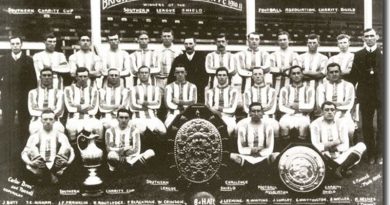The role of analytics in revolutionising football scouting
Football, commonly referred to as the beautiful game, is a sport that has for long been played with much passion, intuition and experience.
People in the past depended on their experience and intuition, to be able to tell if a player was good or not they would look at such things like how one moves, their skills and approaches.
Nevertheless, contemporary football is witnessing the rise of data-driven scouting in which statistics and analysis play an important role in helping clubs see more objectively into the talent of a given player.
The change in scouting techniques, which now rely more on statistics, does not affect only the team’s composition process but also other sectors, such as the betting industry with platforms like SansliSaray. Advanced analytics have given sports bettors an edge by providing them with comprehensive data on team and player performances.
Betting companies increasingly offer odds based on deep data analysis, factoring in a player’s past performances, injury history, and even specific match conditions.
This analytical approach to betting mirrors the data revolution in football scouting, where every pass, sprint, and tackle is quantified to assess a player’s value.
The Rise of Data-Driven Scouting
In the early 2000s, football scouting started to embrace analytics with Brentford and FC Midtjylland being at the forefront.
Such clubs, mostly financially constrained, found out that they could have a better position in the competition by using statistics to recognize some cheap players that were not taken into account by conventional scouting techniques.
Rather than depending on the physicality or talent alone, the analysis involves monitoring players through various means; for instance, how many successful passes they make, do they contribute well in defense too or not, and other more complex statistic such as what is called expected goals (xG) and also expected assists (xA).
Gone are the days when a midfielder was considered effective depending on how many assists or goals they make. Today, it is not enough for them to assist and score.
Scouts need statistics such as key passes, ball progression, as well as pressure application to determine how much one player contributes to a team’s victory or loss.
With this in mind, clubs can determine individuals that may appear non- effective, but have required qualities to thrive under given tactics.
How Analytics Are Shaping Player Development
Apart from recognizing talent, analytics are very important in the development of players. Clubs can monitor how a player is doing throughout the years vis-a-vis historical data to confirm that they are progressing well.
In other words, this statistical method gives the coaching staff and scouting department valuable information on how to improve various aspects of athletes so that they can become better at the sport.
In addition to that, analytics goes further from just one player. Today, teams use statistics to make sure that they have a good mix of talented players with different abilities in the team.
When players’ interactions during the game are studied through analysis, it becomes possible for clubs to create better organized units that operate well in relation to their strategies.
The Future of Football Scouting
The role of analytics in football scouting is expected to increase with advancing technology. There are machine learning algorithms that can predict a player’s potential using historical data; wearable technology that monitors the physical conditions of players during matches and training sessions, and so much more.
These advancements will enable scouts and coaches to make even more precise and informed decisions, revolutionizing the way football talent is discovered and nurtured even more.
The inclusion of analytics in football scouting is a game changer in football club practices. In spite of the fact that there will always be room for the conventional scouting techniques, the emergence of statistical revolution has provided clubs with additional means for recognizing and nurturing talents within their youth systems.
Team construction approaches are experiencing a change that goes beyond football alone and extends to various sectors, which require effective use of data for decision making. With this evolution in football, it is certain that combining scouting with analysis in sport shall determine what is yet to come for this game.




